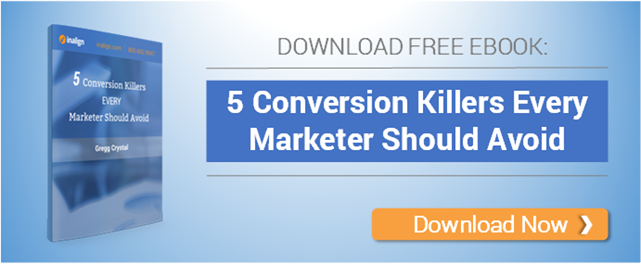
At first glance, online paid advertising and the inbound methodology wouldn't get along.
Inbound has taught us to earn our leads through organic strategies like insightful content and social media marketing whereas paid advertising just rapid-fires advertisements to all who will listen.
But a thoughtful online advertising strategy doesn’t need to conflict with your Inbound ideals. When done carefully, you can build a long and healthy relationship between your advertising and inbound strategies.
Inbound versus Paid Ads
The core of inbound marketing is attracting leads with content they actually want. As HubSpot plainly states:
Instead of the old outbound marketing methods of buying ads, buying email lists, and praying for leads, inbound marketing focuses on creating quality content that pulls people toward your company and products, where they naturally want to be.
Inbound wants your company to be the logical next step for viewers, the place with content they want.
Traditional advertising, on the other hand, shoots out ads to anyone and everyone that can see them, regardless of the viewers’ interest in the content. Certainly a far-cry from drawing people where they naturally want to be.
So how can advertising and inbound work together?
Precise and conscious targeting, that’s how.
Inbound Advertising
Online advertising has given us far more control over how our ads are distributed and to whom they’re distributed to. Instead of firing out random ads and hoping they’ll appeal to a handful of viewers, you can target those who would logically want to see your ad.
Let’s say, for example, your company sells flowers and you want to reach searchers who want to buy flowers. There are two ways you can present your PPC ads:
- You can broadly target the keyword “flowers”. But this means your ad will show up for any query regarding flowers. This would include keywords for those who probably don’t want to buy flowers. For example, “which flowers are my cats allergic to?” or “why are flowers green?”. These searchers aren’t looking to buy flowers, so why show them ads? This method is not inbound.
- You can better align your keywords with your buyers’ intentions. For example, you can target the complete phrase “buy flowers” or “where can I buy flowers online”. Now your ad will only appear to those who actually want your services. This method is much closer to inbound.
Can you see the difference? One method targets anyone vaguely interested in a product you sell, the other method targets those who actually want to purchase the product you sell.
Inbound + Advertising
So how do we supplement our inbound campaigns with online advertising?
There are numerous ways that you can use advertising for your inbound campaigns. For example, you might want to:
- Reach a particularly hard-to-reach audience/persona
- Jump start your new-born campaigns
- Increase your presence for those impregnable keywords
You just need to make sure you’re using the right targeting to reach the audience you want.
Building Your Targeting.
A good advertising campaign begins with understanding your buyer personas and those who already convert on your site.
What keywords are they using? Which blogs attract them the most? What are their pain points and how can you solve them? Use Google’s demographics report to understand their age and interests.
The answers to these questions should shape your targeting. Use the vocabulary that your users speak, give them something they want—help them solve their problems.
How Much Can You Target?
Every online advertising service offers various degrees of targeting.
Search network ads like Google and Bing will allow you to target very specific keywords and phrases. Google also offers tons of remarketing options with in-depth targeting which include user interests, behavior and demographic.
Social media advertising varies in how you target your audience.
LinkedIn ads, for example, let you target by personal information like job title and company, but it doesn’t really suit targeting for user intent the way search ads do.
Twitter, on the other hand, allows you to target by keyword, user interests, who they follow, and several other options.
Similarly, Facebook ads let you target by demographics, interests, recent purchasing behaviors and intents.
You can see how most advertising platforms allow you to target those who are looking for exactly what you’re offering.
Conclusion
Instead of circulating ads all willy-nilly throughout the internet, ad targeting allows you to target only audiences that want your content.
This gives marketers the power to move away from traditional advertising methods and move towards a form of advertising more aligned with the core message of inbound—satisfy your visitors’ interests and needs.



.png)




